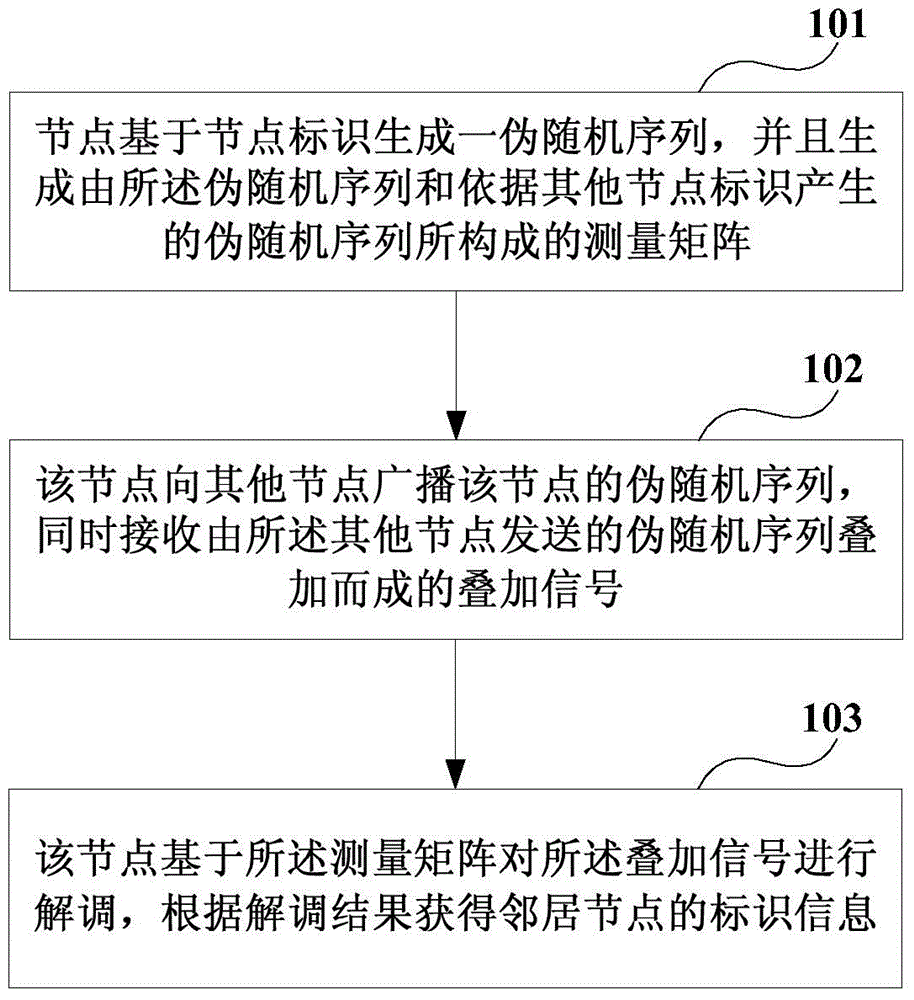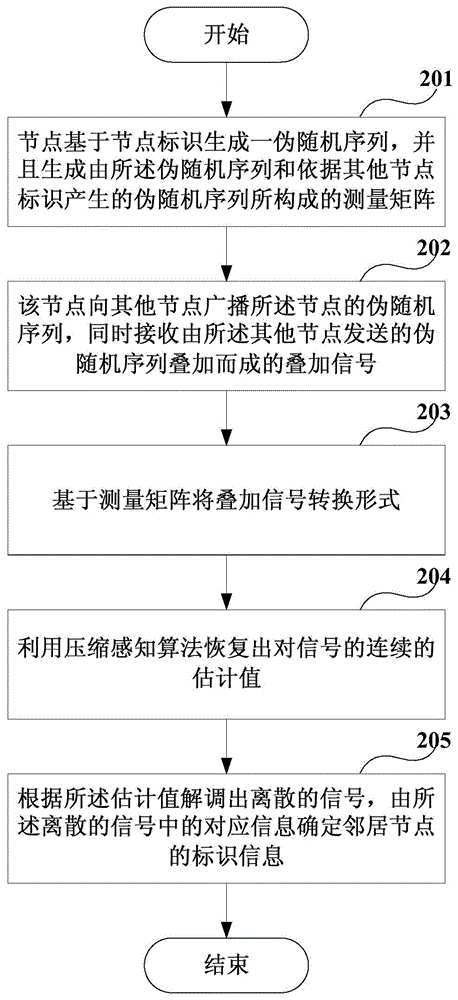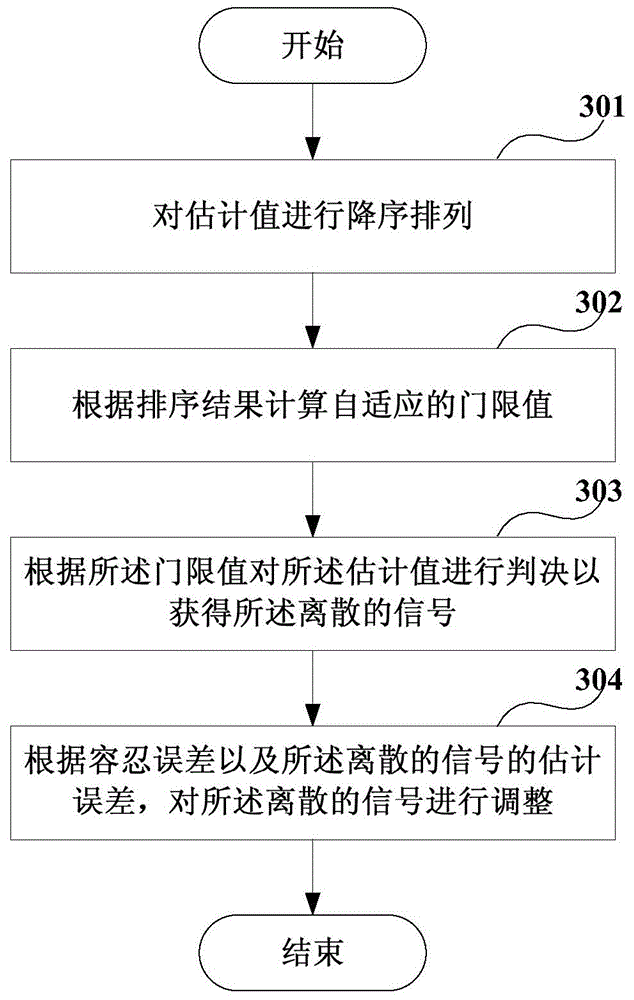Discovery method of neighbor node and apparatus thereof
A discovery method and technology of neighbor nodes, applied in the directions of access restriction, electrical components, wireless communication, etc., can solve the problems of data conflict, restriction, etc., to reduce the time required for discovery, high accuracy, avoid data conflict and half Effect of Duplex Restriction
- Summary
- Abstract
- Description
- Claims
- Application Information
AI Technical Summary
Benefits of technology
Problems solved by technology
Method used
Image
Examples
Embodiment 1
[0044] An embodiment of the present invention provides a method for discovering neighbor nodes, which is applied to a certain node in a wireless ad hoc network. figure 1 is a schematic flowchart of a method for discovering neighbor nodes in an embodiment of the present invention, such as figure 1 As shown, the discovery method includes:
[0045] Step 101, the node generates a pseudo-random sequence based on the node identification, and generates a measurement matrix composed of the pseudo-random sequence and pseudo-random sequences generated according to other node identifications;
[0046] Step 102, the node broadcasts the pseudo-random sequence of the node to other nodes in the wireless ad-hoc network, and simultaneously receives superimposed signals formed by superimposing the pseudo-random sequences sent by the other nodes;
[0047] Step 103, the node demodulates the superposition signal based on the measurement matrix, and obtains the identification information of the neigh
Embodiment 2
[0099] An embodiment of the present invention provides a device for discovering neighbor nodes, which corresponds to the method for discovering neighbor nodes in Embodiment 1, and the same content will not be repeated here.
[0100] Figure 5 is a schematic diagram of the composition of the device for discovering neighbor nodes in the embodiment of the present invention, as shown in Figure 5 As shown, the discovery device 500 includes: a sequence generating unit 501, a signal transceiving unit 502, and a signal demodulating unit 503;
[0101] Wherein, the sequence generation unit 501 generates a pseudo-random sequence based on the node identification, and generates a measurement matrix composed of the pseudo-random sequence and pseudo-random sequences generated according to other node identifications; the signal transceiver unit 502 sends the wireless ad hoc network Other nodes in broadcast the pseudo-random sequence of the node, and simultaneously receive superimposed signals
Embodiment 3
[0113] An embodiment of the present invention provides a node device in a wireless ad hoc network, and the node device includes the apparatus for discovering neighbor nodes as described in Embodiment 2. The same content will not be repeated.
[0114] Figure 8 is a schematic diagram of a node device in an embodiment of the present invention, where only components related to the present invention are shown for simplicity. Such as Figure 8As shown, the node device 800 may include a parameter calculator and a pseudo-random sequence generator to realize the function of the sequence generation unit 501 in the discovery device 500 described in Embodiment 2; a transmitter and a receiver to realize the function of the sequence generation unit 501 described in Embodiment 2 The function of the signal transceiving unit 502 in the device 500 is discovered.
[0115] Such as Figure 8 As shown, the node device 800 may also include a compressed sensing restorer, a decision device, and an a
PUM
 Login to view more
Login to view more Abstract
Description
Claims
Application Information
 Login to view more
Login to view more - R&D Engineer
- R&D Manager
- IP Professional
- Industry Leading Data Capabilities
- Powerful AI technology
- Patent DNA Extraction
Browse by: Latest US Patents, China's latest patents, Technical Efficacy Thesaurus, Application Domain, Technology Topic.
© 2024 PatSnap. All rights reserved.Legal|Privacy policy|Modern Slavery Act Transparency Statement|Sitemap



